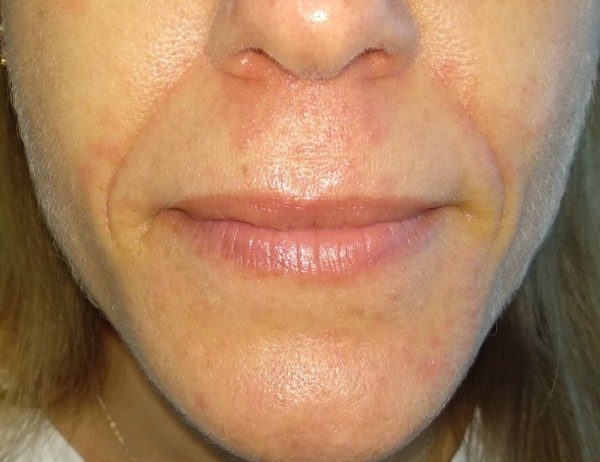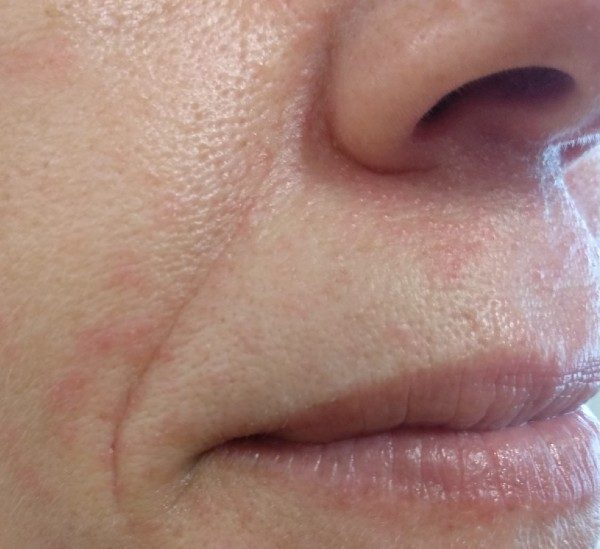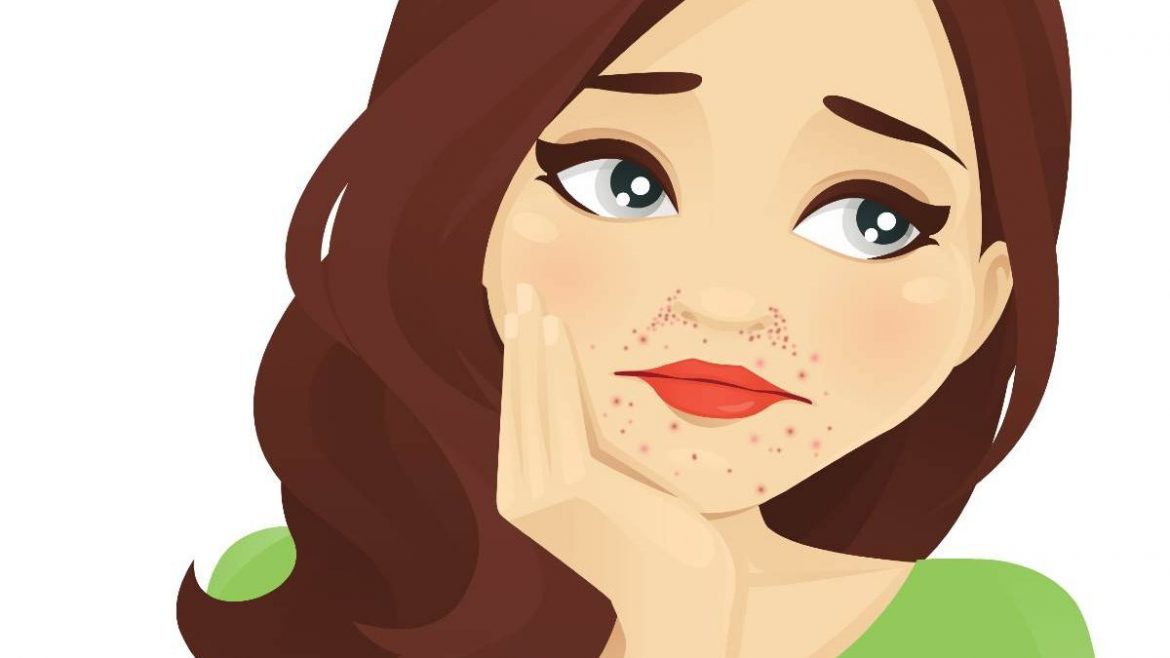Today’s article is dedicated to this condition that I have been asked about so many times during the weeks of captivity. If you have made it this far, perhaps it has happened to you; you may have had pimples around your mouth, nose, or even your eyes. You may have perioral dermatitis, also called periorificial dermatitis.
What is perioral dermatitis?
It is an inflammatory skin disease.
It is characterized by pimples of various sizes located around the mouth or nostrils (in some cases we can even see it around the eyes).

These pimples cause a sensation of discomfort and burning.
It is more common in women than in men, usually between the ages of 16 and 45. Although it is less common, children can also suffer from it (the average age is around 6 years).
Why does perioral dermatitis occur?
As with so many things in dermatology, we do not know the exact cause of an outbreak of perioral dermatitis. However, there are certain factors that are often associated:
- Irritating factors: creams, cosmetics… in this pandemic, the use of the mask, which constantly rubs the area, has undoubtedly had an effect.
- The previous use of topical corticosteroids. It is not known exactly what the mechanism is, but it is true that it is often seen after they have been used as a treatment. It is typical that it improves with corticosteroids, but the flare is much more severe after they are stopped.
- No association has been found with atopic dermatitis, allergies or infections.
- Stress, the phase of the menstrual cycle or the use of contraceptives may influence its development.
How is perioral dermatitis diagnosed?
Dermatologists usually make the diagnosis based on clinical data and a simple examination. In many cases it is possible to make the diagnosis through an online dermatological consultation and very rarely it may be necessary to perform a biopsy.

It is important to distinguish perioral dermatitis from other conditions that also characteristically present in the form of pimples in this area: outbreaks of atopic dermatitis, contact eczema, seborrheic dermatitis, impetigo, adult female acne, or rosacea.
How is perioral dermatitis treated?
It is important to eliminate the two best known causative factors: topical corticosteroids (if they were being used) and possible irritating factors (avoid cosmetics in the area, in the current situation avoiding the use of masks is not easy …).
From there, to accelerate healing we use medical treatments:
- Calcineurin inhibitors in cream:
- Antibiotics:
- Topical: Erythromycin or metronidazole.
- Oral: tetracyclines or erythromycin.
In general, perioral dermatitis is a “fickle” disease. It is often adequately cured with these treatments, but it is not uncommon for new outbreaks to occur, even years after it first appeared.
